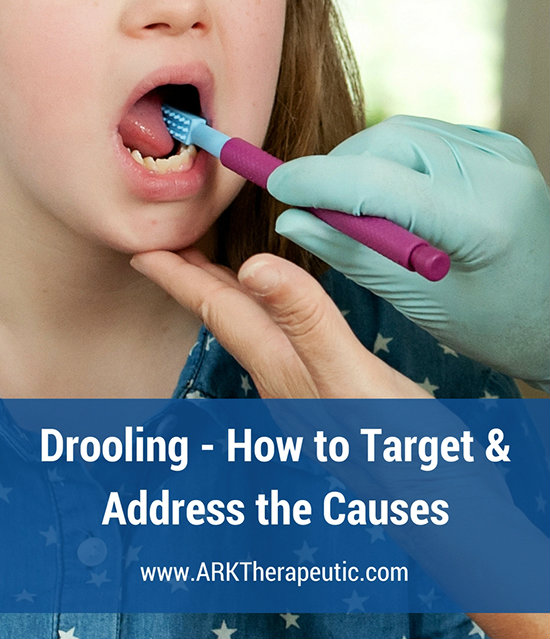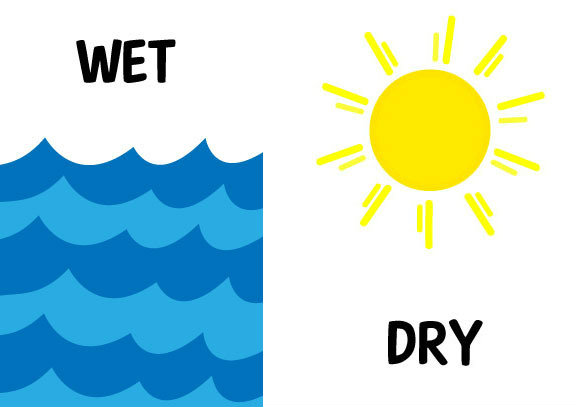Drooling - How to Target & Address the Causes
Posted by Debra C. Lowsky, MS, CCC-SLP on 29th Feb 2012
Drooling is a normal process during infancy and toddler stages, as tooth eruption causes increased saliva production. This excess saliva can be difficult for the baby/toddler to manage, and so it may spill out of the mouth. Past this normal stage, however, drooling can become a social and developmental problem.
Before beginning any drooling remediation program, there are many factors that need to be taken into consideration, including the individual’s cognition, dental issues, awareness, muscle tone of the lips, tongue, and jaw, oral sensitivity, etc. These factors are addressed below:
.

.
• Are there any medical issues present? An ENT should be able to examine the individual for enlarged tonsils, adenoids, sinuses, and/or salivary glands, which may be contributing to the drooling.
• Is the individual a mouth breather? Is it from allergies? Sinus issues? Dental issues? Breathing through one’s mouth can contribute to drooling as well.
• Is the individual easily distracted? Distractions make it more difficult to pay attention to saliva accumulation in the mouth, which means he/she will swallow less frequently.
• Does the individual have sensory issues? If so, he/she will not be able to make sense of the information coming in through the senses. For example, limited oral awareness means that the individual does not feel the saliva build-up, which in turn means that saliva will pool in the mouth as opposed to triggering a swallow. If this is the case, click here for more information on how to normalize sensitivities in the mouth.
• How is the individual’s posture and positioning? Is the head tilted downward with the lips parted? This may be allowing the saliva to pool and spill. Consult with a physical and occupational therapist to check for proper trunk control, adequate head support, and anchored feet.
• Does the individual have low tone in the lips, jaw, and/or tongue? Does the child have an open mouth posture with forward tongue carriage? In a normal resting position of the oral mechanism, the tongue tip should be resting on the alveolar ridge with the jaw in a high position, teeth almost closed, and lips together. Consult with a speech pathologist to see if low tone is affecting one or all of these characteristics. Oral motor exercises can also help (working on lip closure, jaw strength, tongue retraction, etc.) with drooling.
.
So, there are many factors that may be contributing to drooling difficulties. However, drooling can be managed, decreased, and sometimes even done away with completely. Below are some steps to work on:
• Establish comprehension of the opposites wet and dry. Identify objects that are wet. Put objects in water. Talk about them being wet. Feel wet on the palms of the hands. Then establish what it feels like to be dry. Continue to verbalize the words wet/dry in as many settings as possible. Involve them physically to FEEL what it means to be wet/dry.
• If nonverbal, once the individual understands the concepts, I like to work on pictures of wet/dry. Have the images ready for this next step. You can draw pictures like the ones below. Or, if the individual uses a communication device such as the Vantage Lite, you can draw the images from there for consistency. Put the images in a sheet protector to prevent them from getting wet.
.

.
• After working on the concepts of wet/dry in the general sense, I like to proceed to the chin. Ask: “Is your chin wet?” Specify the chin (not mouth), as drool goes lower than the mouth. Instruct the individual to point to the appropriate picture of wet or dry. Make sure the pictures are set apart from each other to ensure correct answers. If wet, provide him/her with a towel to dry off. When the chin is dry, ask: “Is your chin wet or dry?” Wait for an answer and repeat the process. Use a mirror for visual feedback to demonstrate wet/dry. Be patient and remember that being wet is normal for him/her.
• Once the individual consistently answers these questions correctly, move on to swallowing. Have the individual feel you swallow and feel it on him/herself as well. Have the individual take a sip of cold liquid and instruct him/her to feel the swallow (cold liquid increases awareness). Use the word “swallow” often to teach and reinforce it.
• Use a visual cue as a reminder to help the individual remember to swallow. A cue is important so that you do not have to keep repeating "Swallow, you need to swallow." I like to just wipe the side of my nose with my pointer finger, which has proven to be very helpful.
• Once the individual understands what it means to swallow, have him/her swallow a sip of water. Provide him/her with a visual or tactile cue. Then have him/her swallow once more afterwards without any water. This is called a dry swallow, which will teach the individual to swallow without drinking something. Sometimes the individual thinks that you only swallow when you have to drink. Swallowing on command teaches control of the swallow so that when it is necessary to swallow saliva, he/she can. Go back and forth between wet and dry swallows.
• To collect saliva in the mouth, a sucking action is used. You tense your cheeks, lips, and tongue, which causes the saliva to collect in the middle of your tongue for a swallow. Using straws can be helpful in teaching this concept/skill.
• You may also need to work on jaw awareness, strength, and control. For example, the masseter muscles are the muscles that bulge when we clench our teeth. Working on these muscles can help to keep the jaw in a high, closed position. Have the individual feel the masseter bulge on your jaw when you clench your teeth, then have him/her feel his/her own jaw. Clench and relax to feel the difference. Can he/she feel it pop out? For additional jaw strength exercises click here.
• Make it a habit to work on the drooling. Keep in mind that it may take months to see progress. Praise, praise, praise. Be positive, “Oh, I like the way you wiped yourself/stayed dry!” Use rewards that are a priority to the child, not necessarily to you.
• Nasogastric and gastrointestinal feeding can make the problem of drooling even more difficult. Oral feeds should be taught first, BUT the above techniques can also be incorporated into the treatment program at the same time.
• A great, must-have resource is How to Stop Drooling by Pam Marshalla. It is a quick read, and its progressive steps are concisely outlined and definitely user-friendly.
.
Related post: Drooling - Getting to the Root of the Problem
.
Debbie
Debra C. Lowsky, MS, CCC-SLP
.
